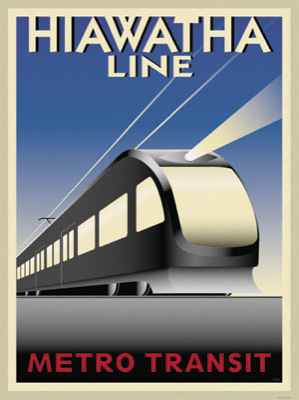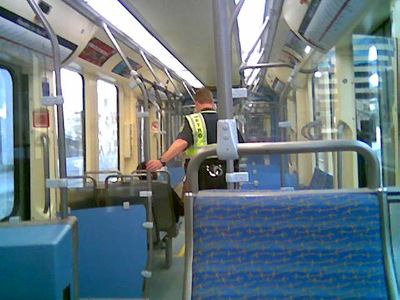No Light Rail in Vancouver!
Light rail costs too much, does too little
$82 Million Per Mile Is Cost Effective?
Last week, the Twin Cities’ Metropolitan Council approved a new light-rail line between
downtown Minneapolis and downtown St. Paul. As approved, the 11-mile line will cost
$909 million, or more than $82 million per mile.
Socialist light-railism in Minneapolis.
The Met Council’s original proposal, which was projected to cost $990 million, was
rejected two years ago by the Federal Transit Administration. Under cost-effectiveness
criteria that the FTA established in 2005, any project that cost $24 or more “per
hour of transportation system user benefits” would be ineligible for federal funding.
The $990 million Central Corridor line was projected to cost $26.05 per hour; cutting
the cost to $909 million would improve this to a mere $23.80 per hour.
After the FTA wrote this rule in 2005, Congress specifically exempted four projects
from it: Portland’s west side commuter-rail line, San Jose BART, a San Francisco
light-rail tunnel, and the extension of the Washington Metrorail system to Dulles
Airport. But Minnesota’s congressional delegation either lacked the pull or the imagination
to exempt the Central Corridor project from the rule, possibly because they didn’t
know until the next year that the project would not meet the cost-effectiveness threshold.
Instead, the Met Council fixed the project by putting it on the surface instead of
through a tunnel under the University of Minnesota east bank campus; removing a station
or two; and terminating the line in front of St. Paul’s Union Depot instead of behind
it, where the rest of the railroad tracks are located. However, the Met Council left
open the possibility that it would reinstate some of the features it cut if and when
the money became available.
A crowded light-rail car on the Hiawatha line.
Flickr photo by bikepunk.
No doubt the council is counting on more money becoming available after the project
gets initial federal approval. Minneapolis’ original Hiawatha light-rail line was
supposed to cost less than $500 million. Its final cost was more than $700 million.
This was not a cost overrun, officials said. Instead, the local Congressional delegation
just found more money and, since they had it, they spent it.
Such alterations to get below the $24 threshold are the predictable result of the
FTA’s cost-effectiveness index. When the index was first announced, it was a breakthrough
to have any firm criteria at all applied to rail transit. But setting a $24 threshold
was not the best way to provide such criteria.
I can think of two rules that would have been better. First, the FTA could have required
metropolitan planning organizations (MPOs) to apply a standard cost-effectiveness
analysis to all potential transit projects in their regions. The FTA would then fund
only those projects that were most cost effective. The danger is that MPOs would
not include viable alternatives that are more cost effective than the expensive rail
projects they wanted to build.
Even better, the FTA could have said it would apply its own standard cost-effectiveness
analysis to rank all proposed transit projects from all cities in the country. Then
it would fund all of the highest-ranked projects until it ran out of money.
This system would have completely changed the incentives facing MPOs and transit
agencies. Today, they try to come up with the most expensive projects possible (up
to the $24 threshold) so they can get “their share” of federal pork. Under this new
rule, the cities and regions that develop the most cost-effective projects are the
ones that would get the most funding.
As it is, if your city came up with four $227 million projects that have cost-effectiveness
indices of $5.95 per hour, those projects would produce four times the benefits of
the $909 million Central Corridor project at $23,80 per hour. Yet the FTA has no
more reason to fund those projects than Central Corridor boondoggle. And that’s not
cost effective.
Reprinted from The Antiplanner


